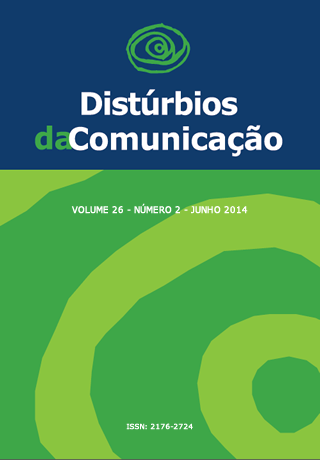Rhinoglotalphilia as an enunciative strategy in the interlocution between a child with excessive nasality and her speech therapy professiona
Keywords:
speech disorders, articulation disorders, child, velopharyngeal sphincter.Abstract
This paper shows and analyzes the hypothesis that the affinity between nasal constraint and glotal articulation in speekers with excessive nasality is a consequence of the need to give acoustical cues to the interlocutor. The language data of a four years old child with velopharingeal incompetence by motor paresy, collected in clinical speech therapy situation, are analysed by an ampliated approach of Émile Benveniste theory. A qualitative method was utilized for the analasys. The results show the relationship between the interlocutor interpretation limitations and rhinoglotalphilia intensification in the girl’s speech.Downloads
Download data is not yet available.
Metrics
Metrics Loading ...
Downloads
Published
2014-05-12
Issue
Section
Artigos
License
Copyright (c) 2014 Ana Paula Ramos Souza, Valdir do Nascimento Flores

This work is licensed under a Creative Commons Attribution 4.0 International License.









